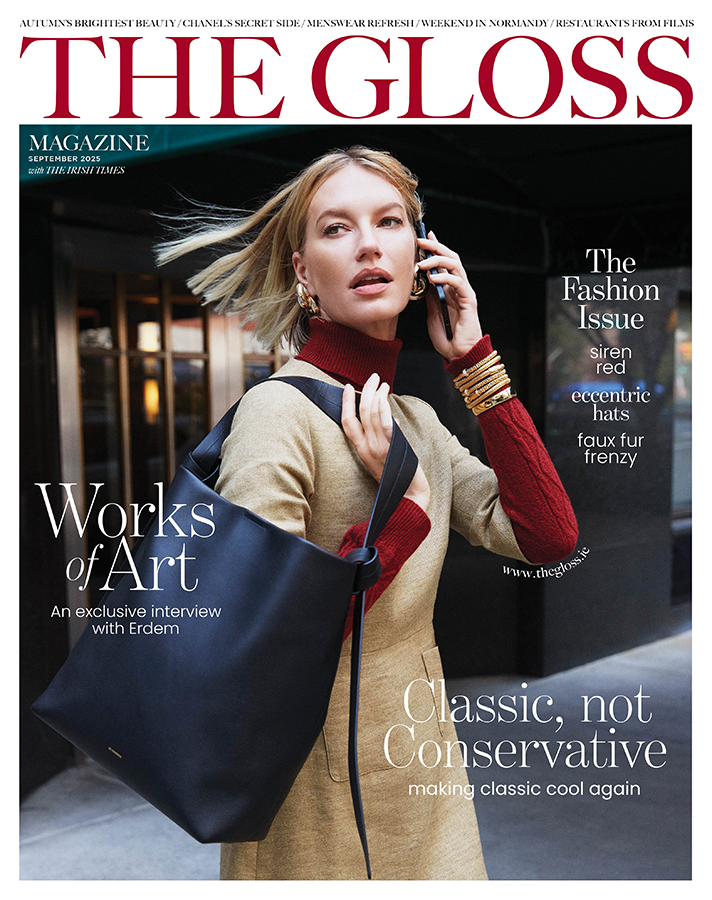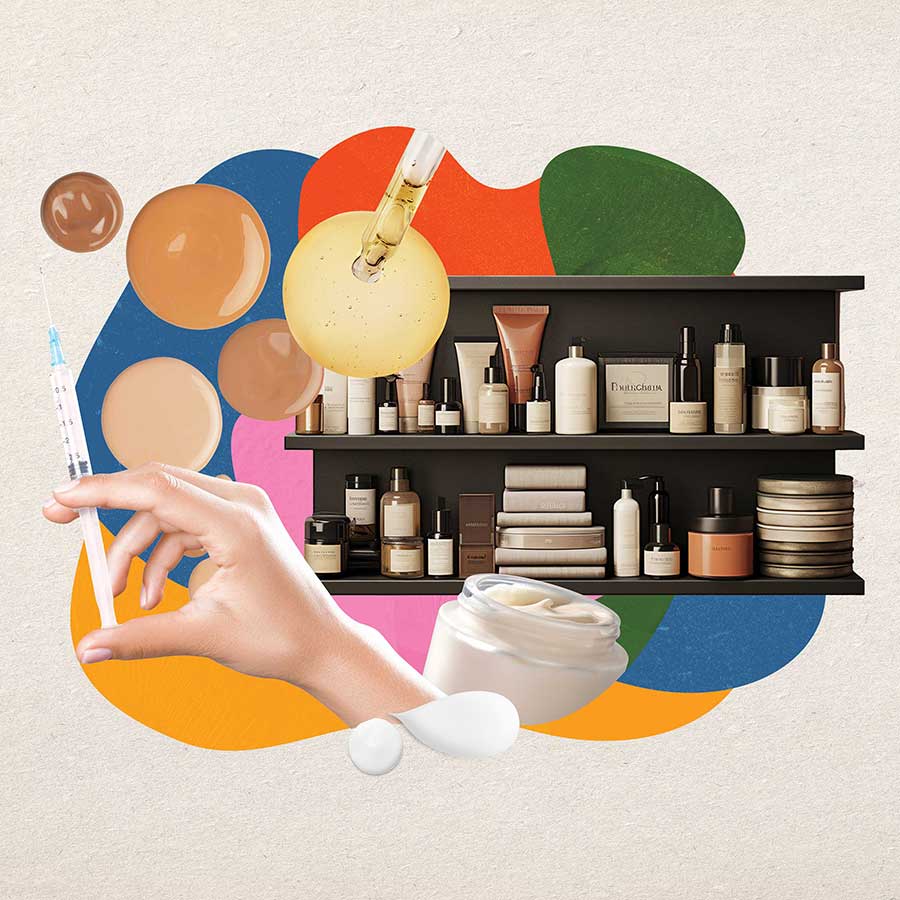How much is too much, when it comes to beauty routines? Sarah Halliwell asks the experts about excess and essentials …
I’m accustomed to overblown claims and general excess when it comes to beauty, but a recent item made me double-take. A skin doctor, promoting a type of microneedling, enthused: “It helps your cells … even freshens up elbows.” Seriously? We’re now supposed to worry about what our elbows look like, too? Enough! We’re all overdoing it. We know we are. Our shelves are piled high with promises. Let’s admit it: beauty products can be addictive. Ever picked up a face cream and read its very basic ingredients list, yet still longed for it, dazzled by its golden packaging and extortionate price tag? I know I have.
We want these things – but we don’t need them. And we’re wasting time and money, not to mention sensitising, irritating and even damaging our skin. “Skincare routines have become complex, with people using sometimes ten-plus products in a protocol. For some skin types, this can have a negative impact on skin,” notes clinic owner Nuala Woulfe. “Product overload can lead to issues like congestion, breakouts or adverse reactions.” Seabody’s Dr Helena McMahon agrees: “Too often we over-complicate our skincare regimens looking for that instant fix, and jump from product to product looking for a miracle solution. But our skin is a living system that needs time for bioactive ingredients to do their work at the cellular level.”
Talk to an expert, and you’ll find they tend to advocate a simpler approach. “Skincare really doesn’t have to be complicated,” insists facialist Dawn Hill, who believes wholeheartedly in “a less-is-more” approach, at every age. “The skin is an intelligent organ and it just needs a few nudges here and there to help it on its way.” It’s a similar story across the board – for example, the “skinification” of haircare puts a welcome focus onto scalp health, but a complex procedure of concentrated products (pre-wash, post-wash, serums, detoxes, masks) is not necessarily best.
“We’re wasting time and money, not to mention sensitising, irritating and even damaging our skin.”
TOO MUCH, TOO YOUNG
Consumers are bombarded by “must-haves” from a young age; we’ve all heard of kids as young as ten being driven by social media to demand inappropriate products. As Woulfe says: “Many skincare products have ‘active’ ingredients, like salicylic acid, retinols, peptides. These are suitable for mature skin to target wrinkles, or else specific concerns like acne. But for pre-teens and teens, these ingredients can do damage, irritate the skin and cause rashes. Youthful skin functions well naturally and does not require the assistance of active ingredients to naturally glow.” Hill adds: “There’s a sense of fear regarding pores, texture and lines among young women in their twenties, and people are turning to strong topicals much sooner than needed, which is a worrying trend.” How to cut through the hype? In such a dense market, find an independent expert.
WHAT DO WE REALLY NEED?
We can overdo it at every age. One of our beauty panellists, Sarah, in her forties, uses around eight beauty products a day: “I feel pressure from social media to try new things. But if I use too many products my skin hates it and I end up stripping back to two or three products.” Maria-Celene (58) adds: “Skincare can become complicated if you let it, but I know I only need a few products, with a great cleanser being top of the list. I look to qualified estheticians for advice that’s relevant for my age.” People always go back to basics eventually, confirms Pestle & Mortar’s Sonia Deasy, who has always taken a pared-back approach. “The key is to be consistent about your routine, and stick to things that work.”
First, wear SPF. A survey for LloydsPharmacy found that only two out of three adults questioned use SPF regularly. As every dermatologist will tell you, SPF is the one step you shouldn’t skip: skin cancer is Ireland’s most common cancer. UV rays are the primary factor in causing some 80 per cent of visible changes to the skin, since they break down collagen and elastin, the proteins which keep your skin firm. Cleansing skin properly is an overlooked basic, too. In the same survey, only half of make-up wearers consistently remove it before bed. Leaving make-up, dirt and oil on your skin overnight makes no sense. And no, micellar water doesn’t cut it. For a core routine, you need a decent moisturiser to protect your skin barrier; and hardworking products such as serums can also be a boost, depending on your age and skin type.
SKIN FASTING
“So it is a good idea to simplify your regimen and to use fewer products,” says Dr Helena McMahon. “But choose ones that are backed by science and that are multitasking. With time, these products will deliver better results.” As with food, sometimes it’s about pulling back when your skin is troublesome, giving your skin a chance to “reset”. “Modern skincare often involves a multitude of active ingredients,” says Nuala Woulfe. “The skin fasting process is nothing new; we have always advised a client struggling with a skin reaction or sensitivity to pare everything back and avoid active ingredients for a period. This allows your skin reset and rebalance itself. Rely on a basic cleanser and a basic moisturiser that contains ceramides or a humectant like hyaluronic acid, plus your daily SPF (a mineral formula if skin is particularly sensitive or reactive).”
Key Irish brands, including Seabody, Skingredients and Modern Botany (making a welcome return), focus on simple, fuss-free efficacy. Modern Botany is dedicated to “nature and simplicity” in skincare, having made a name for itself with three excellent core products that work. This approach creates much less waste, too, as Seabody’s McMahon points out. “The key is committing to a simplified regimen and a holistic approach, embracing nutrition, hydration, movement and sleep,” she says. The conclusion? Step away from the flashy golden pots, and lengthy lists of actives. As with fashion, it’s time to consider investing less, but better.
SEE MORE: The Cork Seaweed-Powered Bath And Body Line Making Waves











